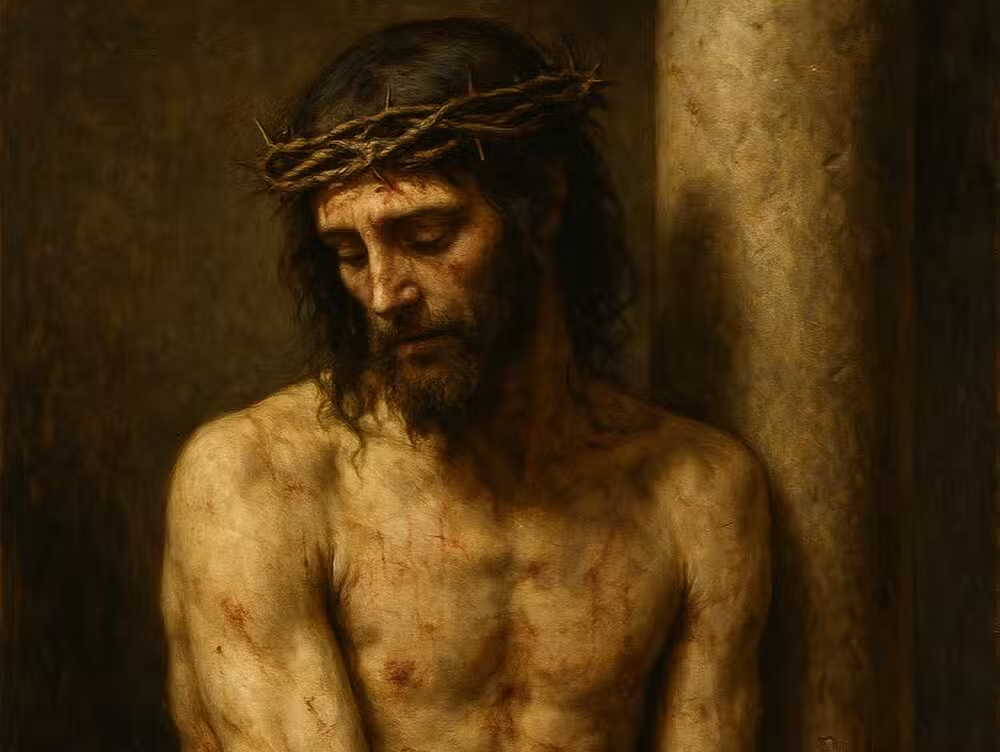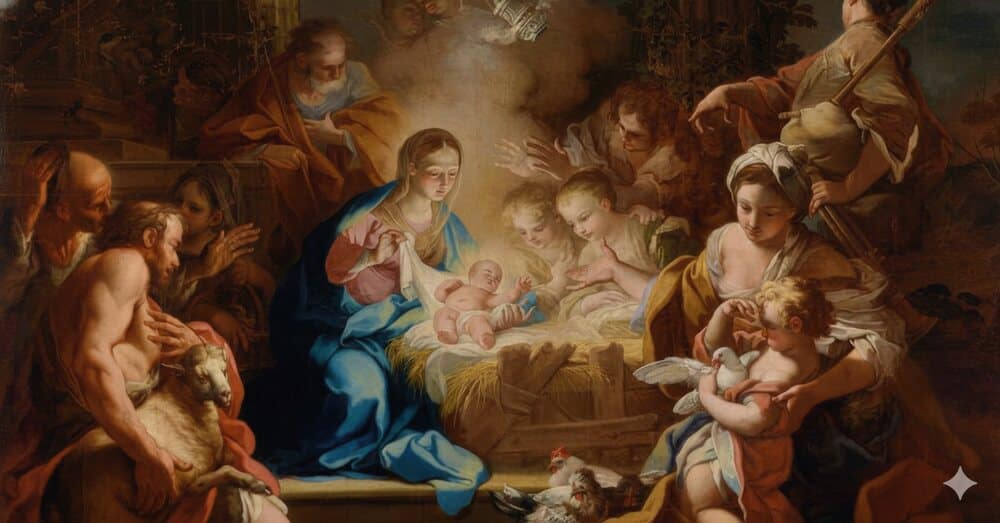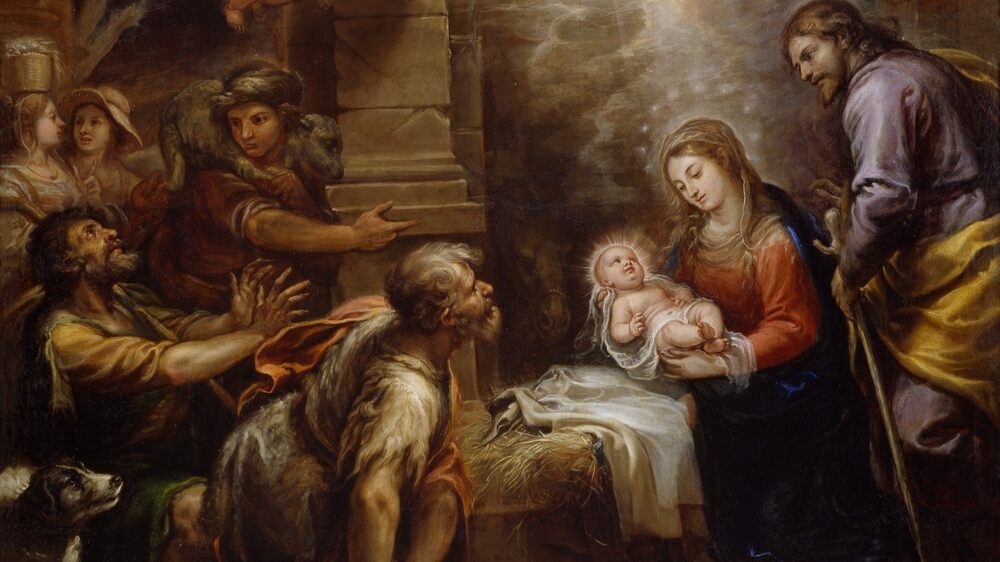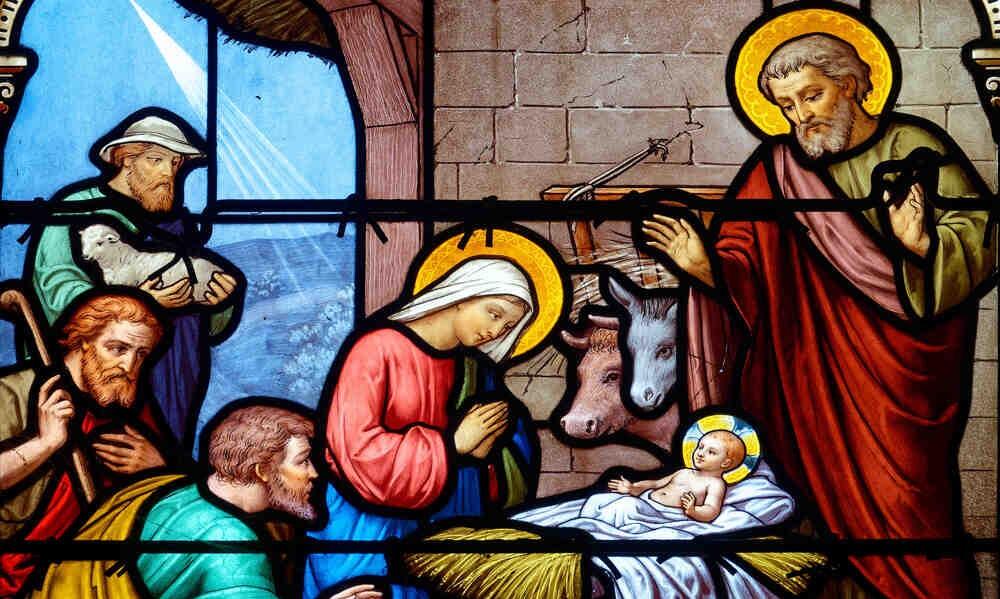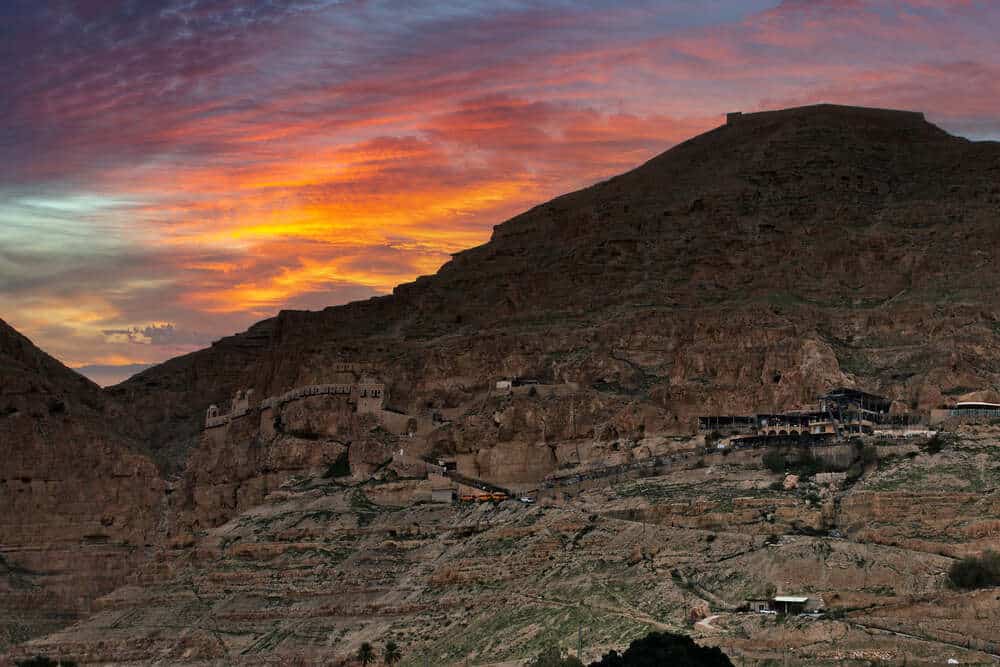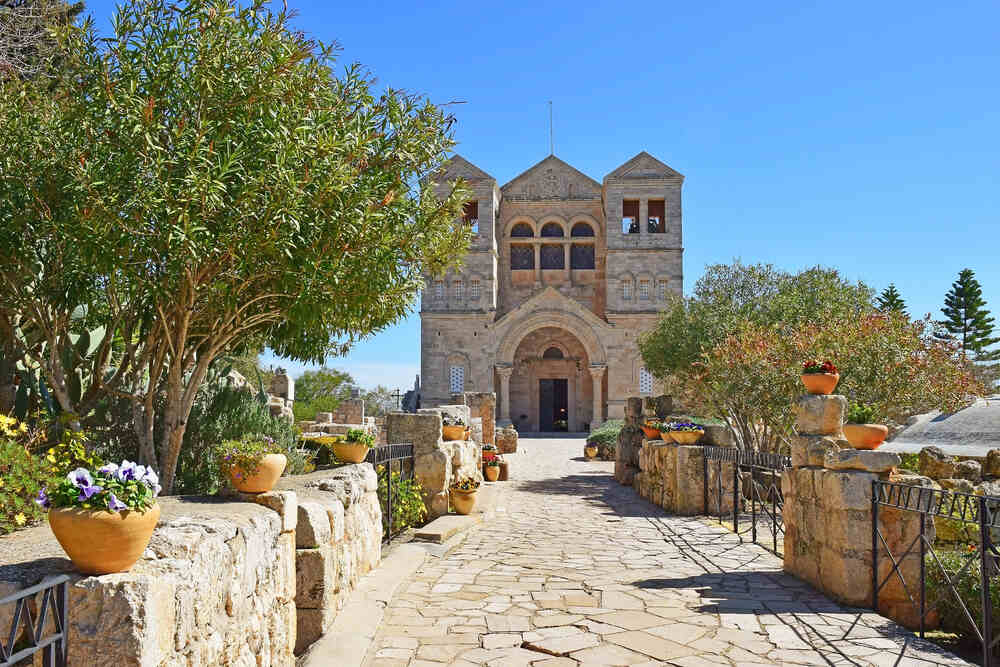Since the first centuries of Christianity, the relics of Christ’s Passion have been venerated with deep devotion by Christian faithful. Did you know that most of them are in Europe? How did these relics come to be guarded in Western churches, so far from Golgotha?
Christian tradition points to Saint Helena, mother of Emperor Constantine, as the great pilgrim and seeker of holy treasures. In the 4th century, at over 70 years old and with a heart ignited by love for the Lord, she embarked on a journey to the Holy Land. There, guided by prayer and Providence, she discovered the Cross where the Savior died and other relics of Christ’s Passion, which had been buried under a pagan temple. This discovery, recounted by historians such as Eusebius of Caesarea and Saint Ambrose, marked the beginning of the public veneration of the Passion relics.
Thanks to Saint Helena, many of these relics were brought to Rome and other parts of the Empire, becoming silent witnesses to Jesus’ redeeming love. From then on, the Christian West zealously guarded these sacred signs.
You can use the Catholic Mass Times app to find the nearest Catholic church with Mass, Confession, and Adoration schedules. It will surely be useful! Download it now.
The relics of Christ’s Passion are found in:
1. Basilica of the Holy Cross in Jerusalem (Rome, Italy)
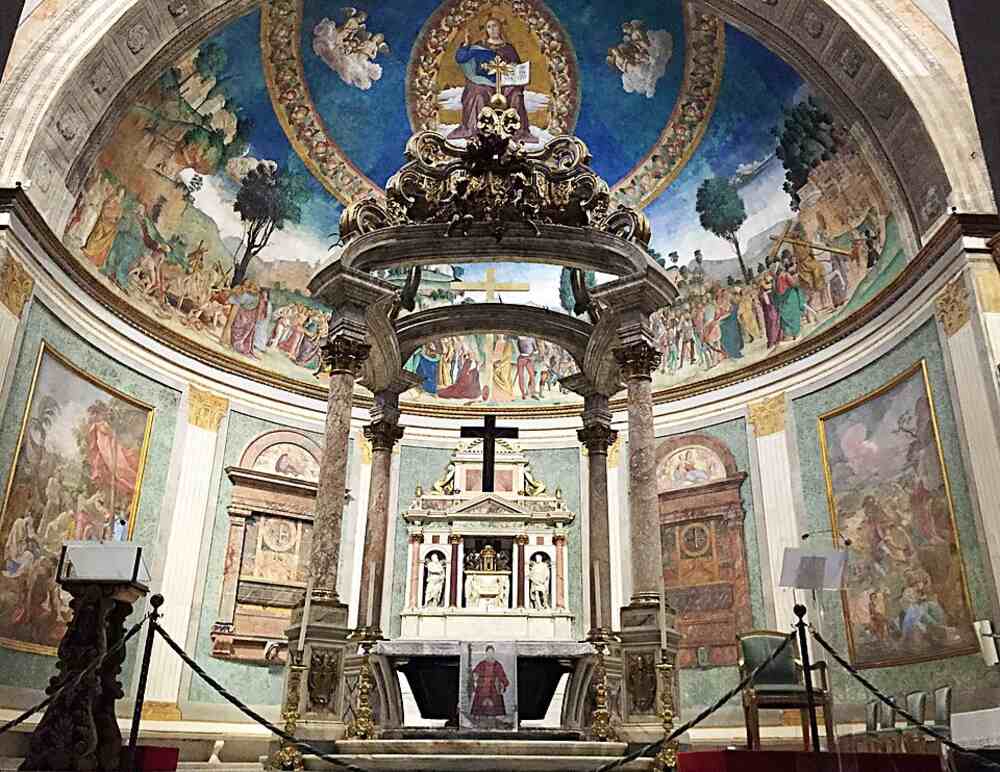
The Basilica of the Holy Cross in Jerusalem is one of the seven principal churches of Rome. It was built on the remains of Saint Helena and Constantine’s palace. In it are found the most important relics of Christ’s Passion that the saint brought from Palestine. The floor was covered with soil from Jerusalem, hence its name:
- Fragments of the Holy Cross.
- The cross of one of the two thieves.
- One of the 30 silver coins that Judas received for selling and betraying our Lord.
- One of the nails from the crucifixion.
- The Titulus Crucis, also known as I.N.R.I.
For more information about this Church, visit the website of the Basilica of the Holy Cross in Jerusalem.
Location: Piazza di S. Croce in Gerusalemme, 10, 00185 Roma RM, Italy
2. St. Peter’s Basilica (Rome, Italy)
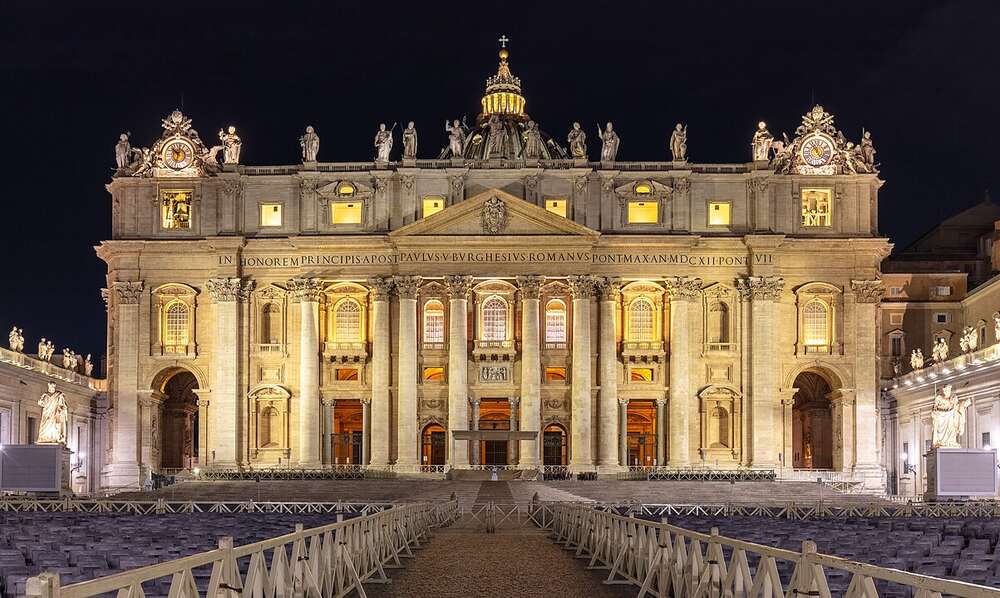
This basilica is one of the holiest sites in Catholicism. It is the largest of all Christian churches. It was built over the place of St. Peter’s martyrdom and burial. Tradition and historical and scientific evidence have confirmed that the saint’s tomb is directly beneath the main altar of this temple.
In St. Peter’s Basilica we can find the following relics:
- Columns from the Temple of Jerusalem: two at the altar of St. Maurice, one in the Chapel of the Blessed Sacrament, and another in the lower chamber of the Pietà Chapel. Constantine the Great had twelve columns from this destroyed temple moved to be placed in front of St. Peter’s Chair.
- Fragment of the flagellation column.
- Two thorns from the crown.
- Veil of Veronica, which is shown for the veneration of the faithful on the last Sunday of Lent.
- Piece of the Holy Cross.
- Lance with which Longinus pierced the side of Our Lord. This is without the tip.
For more information about this Church, visit the website of St. Peter’s Basilica.
Location: Piazza San Pietro, 00120 Città del Vaticano, Vatican City
3. Notre Dame Cathedral (Paris, France)
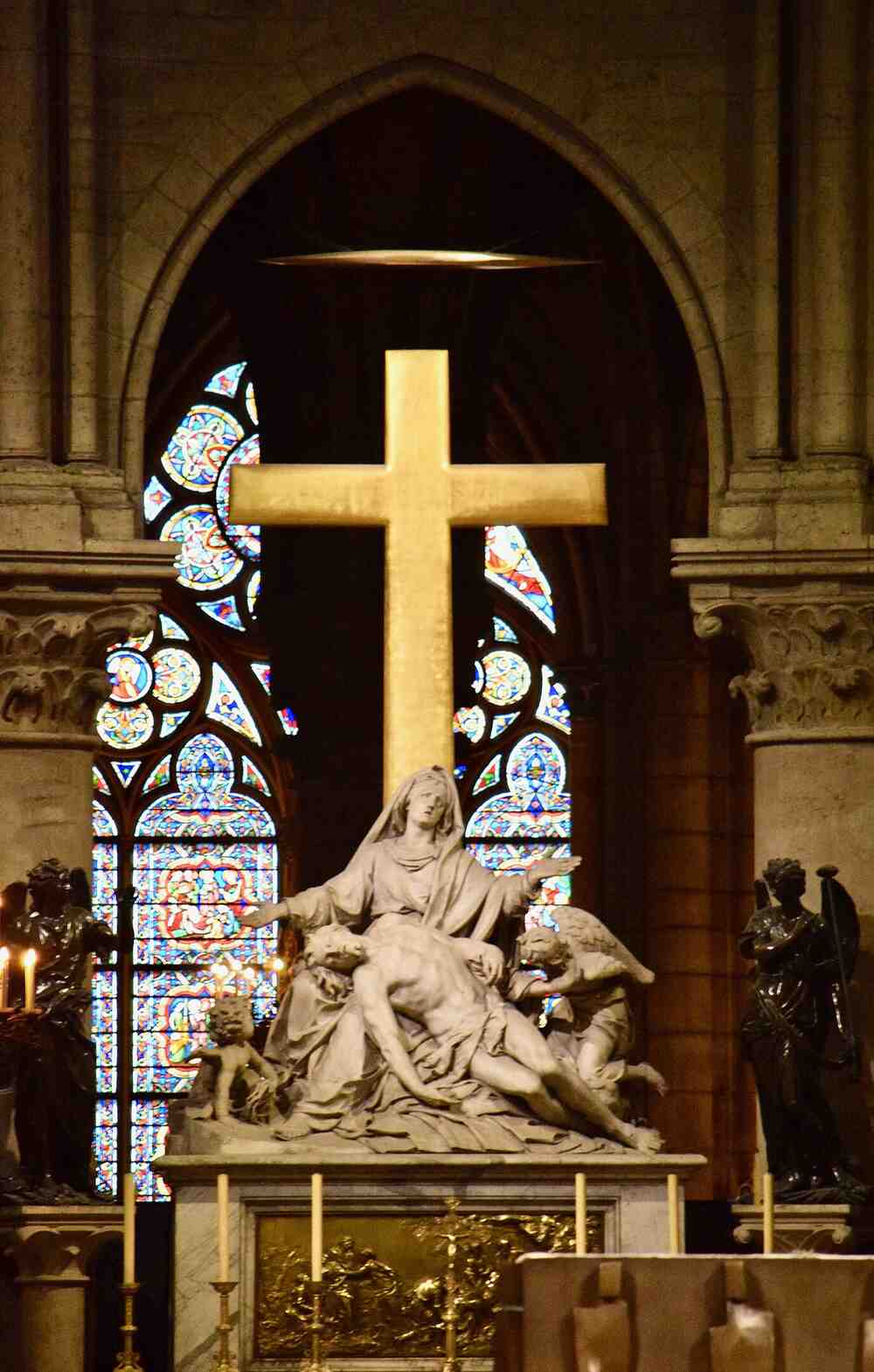
By Omar David Sandoval Sida – Own work, CC BY-SA 4.0, https://commons.wikimedia.org/w/index.php?curid=78140623
6 Parvis Notre-Dame – Pl. Jean-Paul II, 75004 Paris, FranceSaint Louis IX, King of France, recovered the Crown of Thorns during the Crusades. Baldwin II, the Latin Emperor of Constantinople, offered it to him. It was in the hands of the Venetians as collateral for a large loan. However, it was rescued and transferred to Paris.
There, Saint Louis built the Sainte-Chapelle, also known as the royal chapel. I t is a Gothic chapel located on the Île de la Cité in the center of the city, just in front of Notre Dame. It was built to house the relics of the Passion of Christ. The relics remained there until the French Revolution, when they passed into the hands of the state. It wasn’t until 1801 that Napoleon Bonaparte returned them to the Catholic Church, and they were transferred to Notre Dame.
In Notre Dame, the following are preserved:
- The Crown of Thorns, but without the thorns, which have been distributed throughout Christendom.
- The sponge with which the Roman soldier gave vinegar to Jesus while He was dying on the cross.
- The tip of the Holy Lance with which Longinus pierced the Lord’s side.
For more information about this Church, visit the website of Notre Dame Cathedral.
Location: 6 Parvis Notre-Dame – Pl. Jean-Paul II, 75004 Paris, France
4. Basilica of St. John Lateran (Rome, Italy)

By NikonZ7II – Own work, CC BY-SA 4.0, https://commons.wikimedia.org/w/index.php?curid=101762109
The Papal Archbasilica of the Most Holy Savior and of Saints John the Baptist and John the Evangelist in the Lateran, better known as the Archbasilica of St. John Lateran, is the cathedral of the Diocese of Rome, where the episcopal seat of the Bishop of Rome (the Pope) is located. It is dedicated to Christ the Savior; however, it is better known by the name of St. John, as it is dedicated to the two main saints who bear this name.
Christian tradition indicates that the lands and residence of the Laterans, a noble Roman family, were donated to the Bishop of Rome by Constantine as a thanksgiving for his triumph in the Battle of the Milvian Bridge.
After the Basilica of the Holy Cross in Jerusalem, St. John Lateran houses very important relics of Christ’s Passion:
- A thorn from the Crown of Thorns.
- The Scala Sancta. This is the staircase that was located in Pilate’s praetorium and which our Lord climbed to be judged. It has twenty-eight steps. The faithful usually climb it on their knees and can gain plenary indulgences.
- Columns from the veil of the Temple of Jerusalem that was torn in two parts when our divine Savior died. They are found in the basilica’s cloister.
- Cloths that covered the Lord when He was taken down from the cross.
- Blood of the Lord
- Cloth that wrapped the Lord’s head in the tomb.
For more information about this church, visit the Basilica of St. John Lateran website.
Location: P.za. San Giovanni In Laterano, 00184 Roma RM, Italy.
5. Royal Basilica of San Lorenzo de El Escorial (Madrid, Spain)
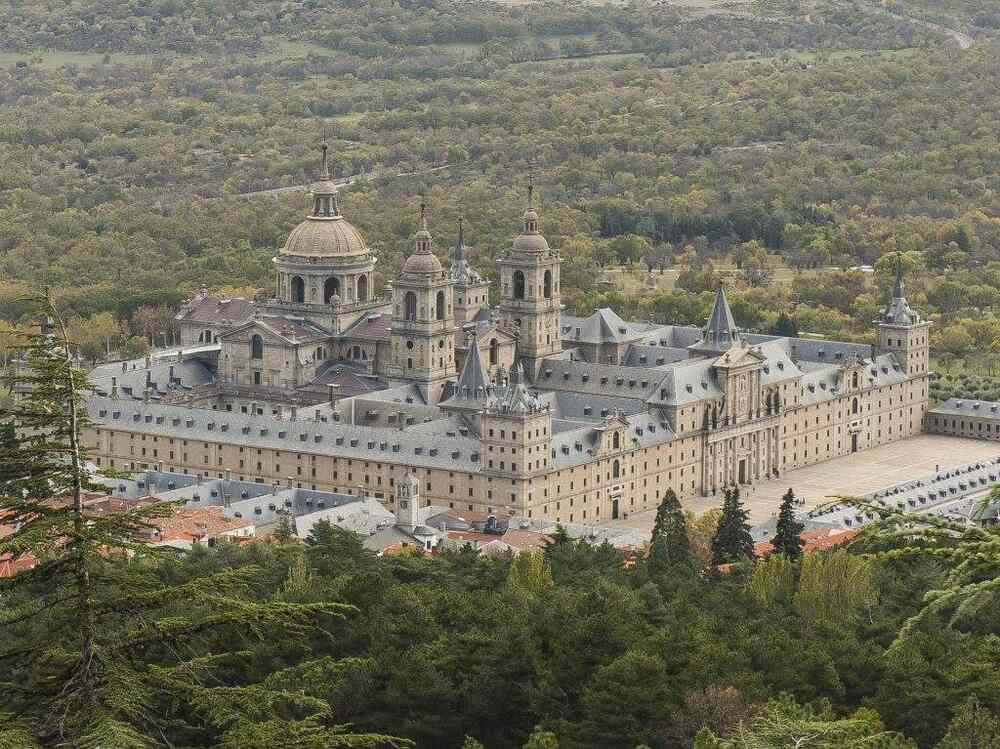
The Royal Basilica of San Lorenzo de El Escorial is the burial site of the Kings of Spain. It was built by order of King Philip II. The following relics of Christ’s Passion are venerated there:
- Ropes with which the Lord was tied when He was arrested.
- Fragment of the flagellation column.
- Thorns from the crown.
- One of the nails with which the Lord was crucified.
For more information about this church, visit the Royal Basilica of San Lorenzo de El Escorial website.
Location: C/ Floridablanca, 12, 28200 San Lorenzo de El Escorial, Madrid, Spain.
6. Cathedral of Santa Maria of Anagni (Lazio, Italy)
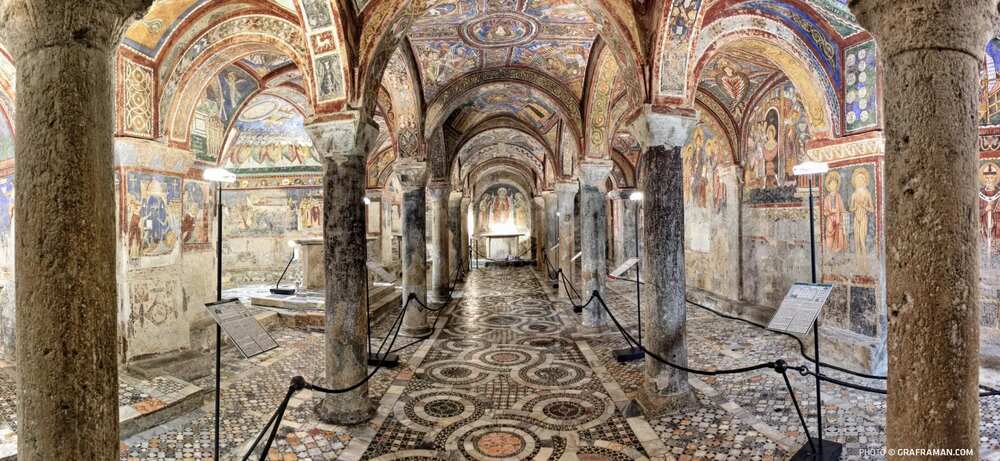
This cathedral, located in Anagni, is dedicated to the Assumption of Mary. It preserves:
- Ropes with which the Lord was tied when He was arrested.
- Whips with which the Lord was scourged.
- Notable fragment of the Holy Cross.
- One of the nails with which the Lord was crucified.
For more information about this church, visit the Cathedral of Santa Maria of Anagni website.
Location: Via Papa Leone XIII, 03012 Anagni FR, Italy.
7. Basilica of Saint Praxedes (Rome, Italy)

The Basilica of Saint Praxedes houses:
- Column of the Lord’s flagellation, brought to Rome by Saint Helena.
- Stone that was placed at the door of the Holy Sepulcher.
For more information about this Church, visit the website of the Basilica of Saint Praxedes.
Location: Via di Santa Prassede, 9/a, 00184 Roma RM, Italy.
8. Basilica of Saint Mark (Venice, Italy)

The Basilica of Saint Mark safeguards:
- Veil imbued with the blood and water that flowed from the open side of the Lord.
For more information about this Church, visit the website of the Basilica of Saint Mark.
Location: P.za San Marco, 328, 30100 Venezia VE, Italy.
9. Metropolitan Cathedral of Saint John the Baptist (Turin, Italy)

The Cathedral of Turin is famous for having the Chapel of the Holy Shroud annexed to it, also known as the shroud or sindon that wrapped the body of Jesus when He was placed in the tomb. This is the most impressive relic of Christ’s passion. It is displayed for veneration by the faithful on special occasions.
For more information about this Church, visit the website of the Cathedral of Turin.
Location: Piazza San Giovanni, 10122 Torino TO, Italy.
10. San Francesco a Ripa (Rome, Italy)
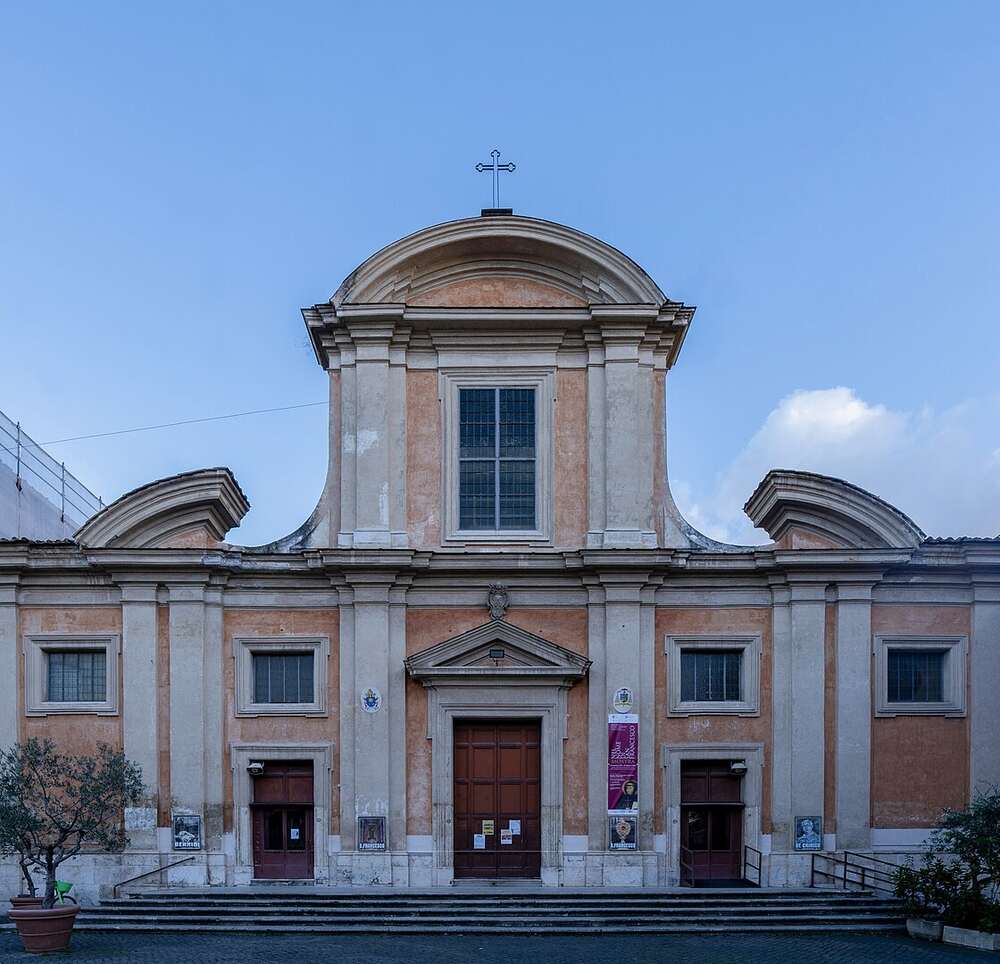
This church, which commemorates Saint Francis of Assisi’s visit to Rome, protects:
- Cloth used to blindfold the Lord.
For more information about this Church, visit the website of San Francesco a Ripa.
Location: Piazza di S. Francesco d’Assisi, 88, 00153 Roma RM, Italy.
11. Basilica of Saint Denis (Argenteuil, France)
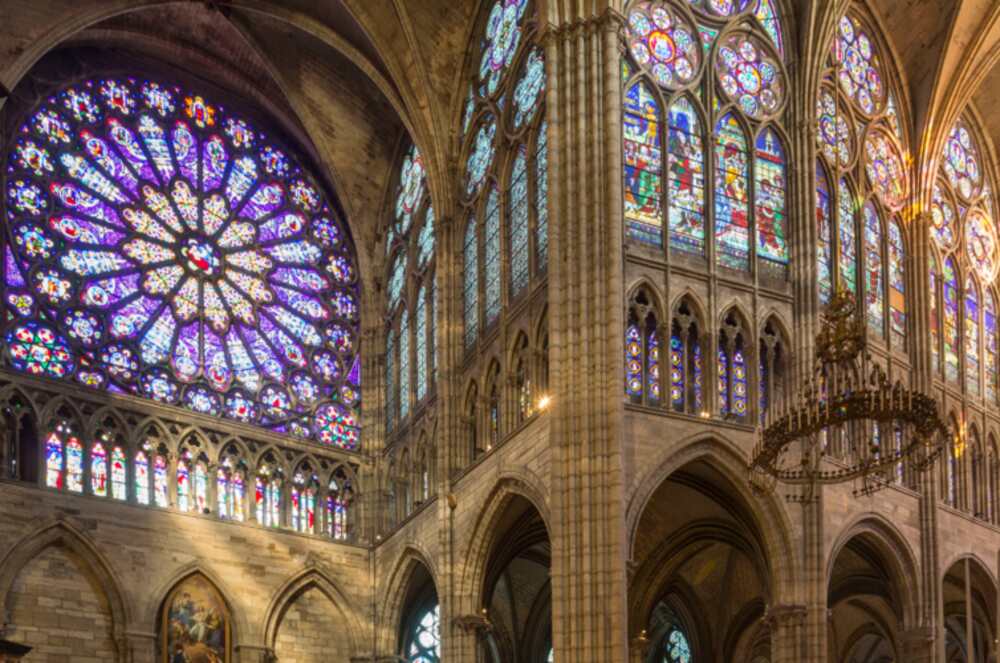
The Basilica of Saint Denis houses:
- Seamless tunic that the Lord wore during the Passion, possibly made by the Virgin Mary herself. The legionnaires drew lots for it during the crucifixion. It has blood stains. It was a gift to Charlemagne, who donated it to the Abbey of Saint Denis when his daughter Theodrada entered that monastery.
For more information about this Church, visit the website of the Basilica of Saint Denis
Location: Piazza di S. Francesco d’Assisi, 88, 00153 Roma RM, Italy.
12. Cathedral of San Salvador (Oviedo, Spain)
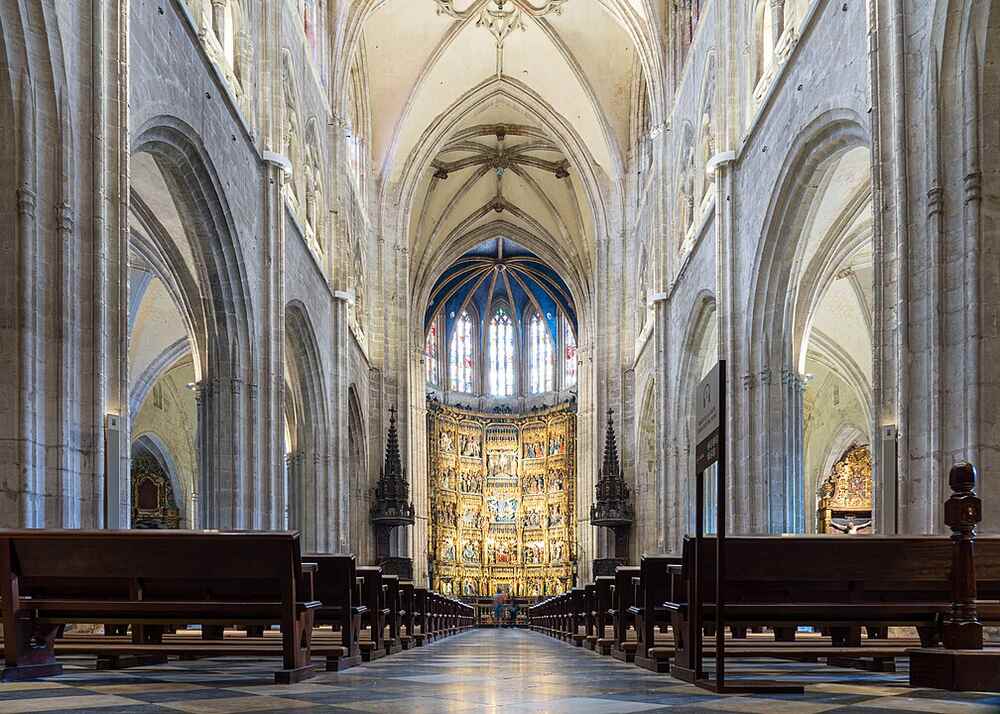
In the Holy Chamber, an inner chapel of the Cathedral, classified as a World Heritage Site, is the Holy Shroud. It has guarded this relic along with others since the 9th century. These were brought from Toledo to keep them away from Muslim territory:
- For more information about this Church, visit the website of the Cathedral of Oviedo.
- Location: Pl. Alfonso II el Casto, s/n, 33003 Oviedo, Asturias, Spain.
Remember that to get the most out of your visit to any of these temples, the best thing you can do is take advantage of the opportunity to confess, adore the Blessed Sacrament and participate in the Holy Mass. Jesus, who died on the Cross, longs for you to reconcile with God, to spend time repairing the sorrows of His Sacred Heart, as wounded today as on that Good Friday. And to participate in the Sacrifice of the Cross in which He, with all the angels and saints, becomes spiritually present.
The relics of Christ’s Passion, scattered throughout various churches in Europe, are not mere ancient objects, but tangible traces of Jesus’ redeeming love. Through faith and tradition, especially thanks to the efforts of Saint Helena in the 4th century, these sacred testimonies have been venerated by generations of believers who, upon contemplating them, renew their faith and hope in the paschal mystery.
Today, each fragment of the cross, each thorn, nail, or cloth invites us to look with our hearts at the Crucified One and recognize in His sacrifice the greatest love. Safeguarded in majestic basilicas and cathedrals, these relics continue to be spiritual beacons that lead the faithful towards the core of the Christian message: the victory of love over sin and death.
You can use the Catholic Mass Times application to find the nearest Catholic church with schedules for Mass, Confession and Adoration. It will surely be useful! Download it now.
What Are the Relics of the Passion of Christ?
The relics of Christ’s Passion are material objects that, according to Christian tradition, were directly related to Jesus’ suffering, crucifixion, death, and burial. Among the most venerated are fragments of the Holy Cross, the Crown of Thorns, the nails of the Crucifixion, the Holy Shroud, the lance that pierced His side, and the Holy Chalice. These relics are considered sacred because they tangibly represent Christ’s redemptive sacrifice and are objects of profound veneration by the faithful worldwide.
How Did the Relics of the Passion of Christ Arrive in Europe?
According to Christian tradition, Saint Helena, mother of Emperor Constantine, undertook a journey to the Holy Land in the 4th century. During her pilgrimage, she discovered the True Cross and other relics of the Passion, which were subsequently transferred to Rome and other parts of Europe for safekeeping and veneration.
Where Are the Main Relics of Passion of Christ Located?
The most significant relics of Christ’s Passion are preserved in various churches and cathedrals across Europe. Among them, the Basilica of the Holy Cross in Jerusalem in Rome, the Sainte-Chapelle in Paris, and the Cathedral of San Salvador in Oviedo stand out. These places house objects such as fragments of the Cross, the Crown of Thorns, and the Holy Shroud, venerated by millions of faithful.
How Can I Find a Church That Houses Relics of Christ's Passion?
-
- Open the app and move the map manually until the area where you want to search is in the center of the screen. (This step is not necessary if you want to search in the area around your current location.)
- Press the magnifying glass icon at the top of the screen
- You will see a list of all nearby churches. The list will be sorted by distance from the point in the center of the screen where you pressed the magnifying glass.
- You can filter the list by typing a text in the search box at the top of the list. Only churches with these characters in the church name, address, location, mass times, confession, or additional information will be visible. For example, you can type 12: to search for masses between 12:00 and 12:59.
- You can scroll through the list until you find the one that best suits your needs. You can tap on a church to go to the screen that shows all its details.

